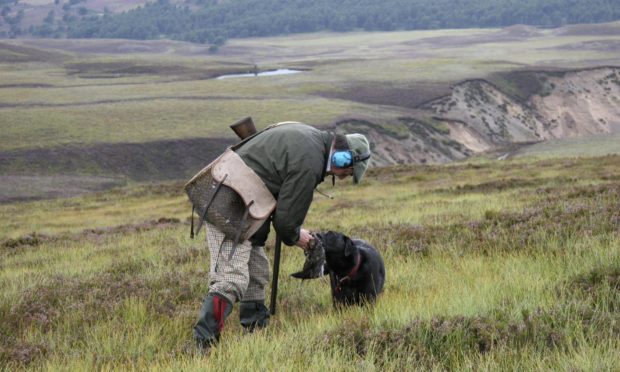A bizarre row has broken out between conservation groups over the amount of “degraded” shooting land in the Cairngorms National Park.
Charity Rewilding Britain launched a campaign ahead of the traditional start of the grouse season on August 12 – often called the glorious twelfth – demanding more “wild land” in all the UK’s national parks.
The environment group claimed 44% of Scotland largest national park was “nature depleted” and “degraded” through its use for driven grouse shooting.
The group said land managed to facilitate the blood sport had contributed “to climate breakdown” and “prevented significant recovery of wildlife.”
But park leaders have hit back.
The CNPA claim the group has made an error and has included park land used for farming and conservation management, among other blood sports, in its calculations.
But Rewilding Britain maintain they have used the park’s own figures.
The group has challenged the park’s leaders to state how much of the park they would “find acceptable” being used primarily for the controversial blood sport.
How have Cairngorms leaders responded to the Rewilding Britain claims?
A Cairngorms National Park Authority (CNPA) spokesman said: “We are aware of a recent report from Rewilding Britain.
“The report claims – incorrectly – that 44% of the Cairngorms National Park comprises driven grouse moors.
”The figure quoted is for heather moorland as a whole, not the area used for driven grouse shooting.
“This 44% of the Cairngorms is used for a variety of land uses including upland farming, deer stalking, driven grouse, walked up grouse, conservation management, as well as regenerating woodland and montane scrub.”
The CNPA spokesman went on to stress the parks track record in creating more woodland and restoring peatland to fight climate change.
“In the past four years, woodlands have been expanding in the Cairngorms by around 1,000 ha per annum. That is the equivalent of over five football pitches per week.
“Significant progress is being made on peatland restoration.
“We accept, though, that there is still much to do to tackle the climate emergency and nature crisis.”
How does driven grouse shooting work and why is it controversial?
Driven grouse shooting involves a row of people called beaters flushing grouse out of the heather to fly over the shooting party.
The blood sport is a significant source or jobs and income in many rural communities, including those in Highland Perthshire and the Angus Glens.
But several groups have criticised it heavily for its effect on the environment.
Practises such as heather burning, to create young shoots for grouse to feed on, increase carbon emissions.
Campaigners have also accused game keepers of killing rare birds of prey and mountain hares to protect the valuable grouse.
Who has supported the Rewilding Britain campaign?
The Rewilding Britain campaign has received significant support on social media.
Scotland outdoor expert and writer Cameron McNeish tweeted in support of a petition set up as part of the campaign.
He wrote on the social media platform: “None of our national parks are wild enough to withstand the shocks of the extinction and climate crises.”
None of our national parks are wild enough to withstand the shocks of the extinction and climate crises.
Tell the UK Government and devolved administrations to mandate #wildernationalparks and restore nature on a large scale
Sign the petition https://t.co/CRvD6utQ0U— Cameron McNeish (@CameronMcNeish) August 5, 2021
A spokesman for Rewilding Britain said: “It’s strange the Cairngorms National Park Authority is disputing the amount of the national park given over to ecologically damaging, intensively managed driven grouse moors.
Given that we used their own figures in our research.
“There are no other studies we have found that attempt to calculate this area.
“So it would be hugely helpful if the Cairngorms National Park Authority can now issue a clarified and revised figure for the precise area of intensively managed driven grouse moors in the park.”
